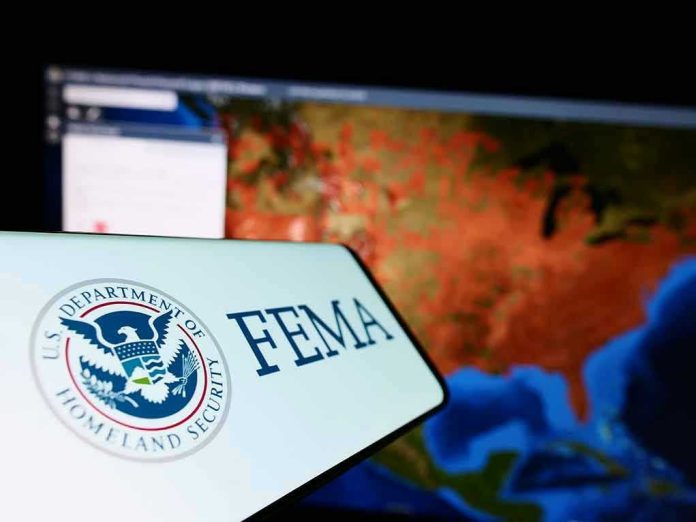
President Trump has made a decisive move, unlocking FEMA funds for disaster-hit states months after the calamities struck, leaving many Americans wondering about the future balance of federal and state responsibilities in disaster response.
At a Glance
- President Trump releases FEMA funds for Indiana, Michigan, Kentucky, and West Virginia.
- Trump had previously suggested eliminating or reducing FEMA’s role.
- The funding aims to aid recovery from severe weather events in 2025.
- Debate continues over the balance of federal and state responsibilities in disaster management.
Trump’s Sudden Shift on FEMA Funding
In a surprising turn of events, President Donald Trump has announced the release of FEMA funding to four states—Indiana, Michigan, Kentucky, and West Virginia—that were devastated by severe weather months ago. This decision follows his earlier proposal to eliminate or significantly curtail FEMA’s role, sparking a nationwide debate on disaster response. The administration had faced intense criticism for delaying federal assistance while disasters wreaked havoc. Trump’s announcement marks a crucial moment in the ongoing discourse over federal and state responsibilities in disaster management.
Despite the earlier push to reduce FEMA’s scope, Trump’s approval of funds like $50 million for Michigan and $15.1 million for Indiana shows a tactical shift. State governors expressed gratitude, acknowledging the dire need for federal support to rebuild communities ravaged by tornadoes, floods, and ice storms. However, the underlying question remains: Does this signify a long-term commitment to FEMA, or is it merely a short-term solution to quiet criticism?
The Political Dynamics at Play
The Trump administration’s stance on FEMA has been a rollercoaster ride. Earlier in 2025, Trump floated the idea of dismantling FEMA, arguing that states should be primarily responsible for disaster response. This proposal faced fierce opposition from Congress, emergency management professionals, and the public, with a staggering 99% of public comments favoring FEMA’s continued existence. The administration’s approach came under fire after a delayed response to catastrophic floods in Texas, further straining public trust.
The shift to release FEMA funds appears to be a response to mounting pressure and the undeniable need for federal intervention in catastrophic events. Yet, the administration maintains that the ultimate goal is to redefine FEMA’s role to focus more on financial support rather than operational leadership, aligning with conservative values of state responsibility and reduced federal bureaucracy.
Implications for Disaster-Stricken Communities
The immediate release of FEMA funds will bring much-needed relief to affected communities in the Midwest and Appalachia, enabling the rebuilding of homes, infrastructure, and public services. However, the administration’s broader agenda to devolve disaster response to states raises concerns about the long-term implications. Wealthier states might manage better, while others could struggle without sustained federal support. The projected $7.8 billion deficit in FEMA’s disaster relief fund adds another layer of complexity to future funding capabilities.
The debate over FEMA’s future role touches on economic, social, and political aspects, with the potential to reshape federal-state relations. Economically, while federal funds help offset immediate damages, uncertainty about future support could hinder long-term planning. Socially, delayed federal responses have already heightened anxiety among affected communities. Politically, the issue has become a flashpoint, highlighting the ideological divide over government roles and responsibilities.
Expert Opinions and Future Outlook
Emergency management experts and former FEMA administrators have voiced strong support for maintaining a robust federal role in disaster response. They warn that dismantling or drastically reducing FEMA would leave many states ill-prepared for large-scale disasters. The National Emergency Management Association has also expressed concern about the solvency of FEMA’s disaster relief fund and the risks of shifting too much responsibility to states.
While the Trump administration frames its approach as a return to constitutional principles of federalism and fiscal responsibility, critics argue that the proposed changes overlook the practical realities of disaster management, especially in an era of increasingly severe weather events. The ongoing debate underscores the need for a balanced approach that ensures both federal and state capabilities are leveraged effectively to protect and support American communities in times of crisis.
Sources:
Union of Concerned Scientists Blog
Department of Homeland Security






